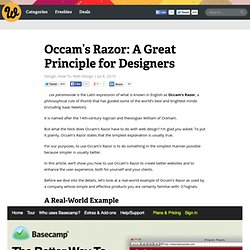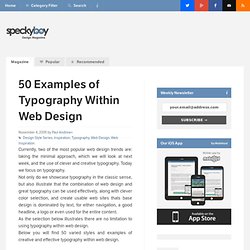

The Psychology of Web Design. Designers often don’t take the time they should to learn about how basic psychological principles can effect the experience their visitors have on the sites they build. Psychological principles are either looked upon as unnecessary, or too complicated. But the truth is that they’re neither.
There aren’t that many concepts associated with basic design psychology, and most are relatively straight-forward and easy to learn. They’re also mainly easy to implement, though some take a bit more care and planning than others. Read on to learn more and please leave your feedback and comments at the end of this post. The Purpose of Psychology-Based Design Considering psychology in your design process can have a few positive effects on your end result. By considering visitor psychology, you’ll likely end up with happier visitors who are more likely to perform the actions you want them to, whether that’s getting in touch with you, buying your product, or referring their friends.
Building Trust. Lessons from mobile web design. Mobile development is all the rage, and the interactive industry is in great turmoil as countless tablets and smartphones come to market.

Mobile app development gets most of the attention, while the mobile web somewhat quietly creeps along. But the mobile web is making progress every day as more and more developers launch mobile-optimized interfaces. The great thing about the mobile web is that it is fundamentally built with all of the same tools used in traditional web design and development. This makes it far more approachable than app development. Also, many users will want to visit a company’s website on the go, without necessarily needing a full-blown app. Building websites optimized for mobile is so similar yet so different then designing for the desktop.
These same issues are ever present on the desktop but are sometimes easier to overlook. Simplified navigation on mobile websites The content that didn’t make it into the mobile version is, of course, still entirely relevant. Occam’s Razor: A Great Principle for Designers. Lex parsimoniae is the Latin expression of what is known in English as Occam’s Razor, a philosophical rule of thumb that has guided some of the world’s best and brightest minds (including Isaac Newton).

It is named after the 14th-century logician and theologian William of Ockham. But what the heck does Occam’s Razor have to do with web design? I’m glad you asked. To put it plainly, Occam’s Razor states that the simplest explanation is usually true. When Minimalism Backfires: When Too Little Is Not Enough. As seen in our previous article on the subject and examples around the web, minimalism is quite the trend.

When the theory behind it is well implemented, it makes for some beautiful, simple and yet modern designs. Because it is a trend, everyone wants to follow it. But can it be taken too far? And is it right for all types of websites? This article explores some of the potentially negative side-effects of minimalist designs and the consequences of implementing one incorrectly. Infographic of the Day: Anatomy of a Landing Page. For Web Designers - Website Design Resources. 40 Must Read Blogs For Developers and Designers. If you are a web designer and you are looking for resources, inspirations, designing tutorials or want to keep yourself updated with the current trends in this field then you don’t need to worry because Internet is full of blogs related to web designing.

You will find a huge number of blogs featuring tips, tricks and how-to’s on daily basis. Today we have collected 40 awesomely informative blogs which will bring out the best designer from you. Make sure to follow all these for updates on latest trends in designing industry. 1. A List Apart 2. 3. 4. 5. The Photoshop Etiquette Manifesto for Web Designers. 50 Examples of Effective Uses of Typography Within Web Design. Currently, two of the most popular web design trends are: taking the minimal approach, which we will look at next week, and the use of clever and creative typography.

Today we focus on typography. Not only do we showcase typography in the classic sense, but also illustrate that the combination of web design and great typography can be used effectively, along with clever color selection, and create usable web sites thats base design is dominated by text, for either navigation, a good headline, a logo or even used for the entire content. As the selection below illustrates there are no limitation to using typography within web design. Below you will find 50 varied styles and examples of creative and effective typography within web design. Previous parts of the Top 50 Web Design Styles Series Hull Digital Live 09 Project 365 Oliver Kavanagh Denise Chandler Brunet-García Advertising Inc Random Thought Pattern StackOverflow DevDays New to York The Skyline gregorywood.co.uk Gareth Dickey Ryan Keiser Circus.